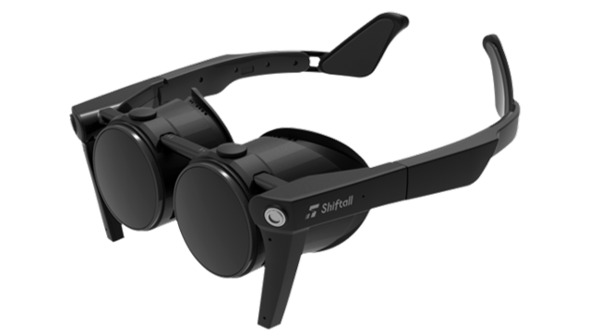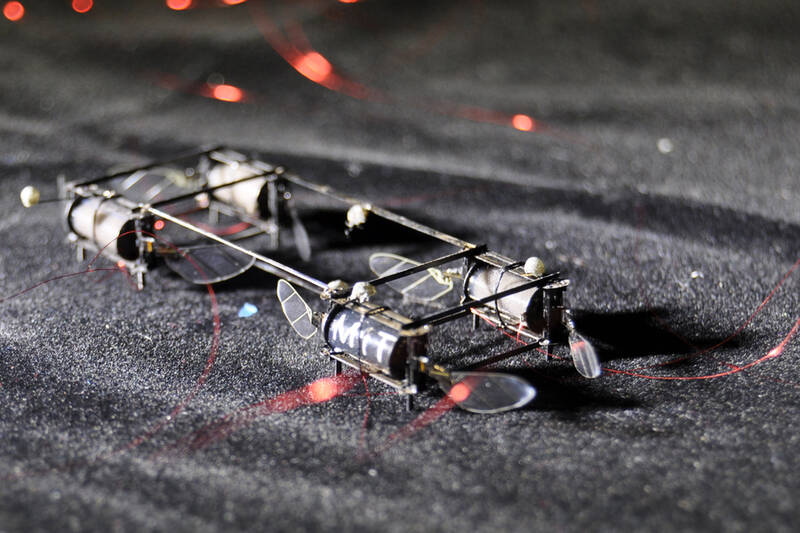Optics Developments and Breakthroughs of 2022
The year is only half over, but researchers in the fields of physics, nanomaterials, astronomy, and computing have already racked up some exciting scientific advancements that are focused on or made possible by optics. In this blog post we look at some of these intriguing developments that hold promise for near- and long-term future applications.
Could Pancake Lenses Help Drive Adoption of AR/VR?
Kicking off 2022 was the launch of an innovative VR optical design from Kopin, an all-plastic “pancake” lens. Traditional glass lenses tend to add weight to NED (near-eye display) headsets such as augmented-, virtual-, and mixed-reality devices. Previously, plastic lenses could only be used in conjunction with at least one spherical glass lens because the birefringence (double refraction) of plastic materials creates image defects.
Kopin’s new two-element design incorporates aspherical plastic lenses with virtually no birefringence that produce better image quality. The new Pancake (P80) lens, sold together with Kopin’s OLED microdisplays, will enable VR devices to be thinner, lighter, and more comfortable for a user to wear for long periods. Learn more about the difference between pancake lenses and the Fresnel lenses found on current VR headsets.

Kopin’s plastic pancake lenses are used in Panasonic’s new MeganeX VR headset, which is much smaller than typical VR goggles.
Is There Another Earth? Discovery of a Neighboring Multi-Planet Star System
Astronomers at MIT have identified a multi-planet system located just 33 light years (10 parsecs) from Earth, making it one of our closest neighbors. The system orbits around a small M-dwarf star, named HD 260655. It contains at least two terrestrial Earth-sized planets, although they are unlikely to be habitable because they are subjected to temperatures that are too high to sustain liquid surface water. But they offer a fertile environment for atmospheric study and, potentially, they might even show signs of carbon-based life forms.
The discovery, classification, and validation of a new planet typically takes several years. In the case of the HD 260655 system, the process was much faster thanks to a treasure trove of data that has been collected by some of the world’s most advanced telescopes and scanning systems. Indications of a planet were first spotted by Michelle Kunimoto, an MIT astrophysicist working as part of NASA’s Transiting Exoplanet Survey Satellite (TESS) mission.
Confirmation of her observation came quickly from data collected by the High Resolution Echelle Spectrometer (HIRES) at the Keck Observatory in Hawaii, which houses the world’s largest optical and infrared telescopes at 10.2 m each. Additional necessary information and confirmation came from the Calar Alto Observatory in Spain, collected by their CARMENS system using a 3.5 m telescope—the largest in mainland Europe—with near-infrared and optical Echelle spectrographs. Learn more…

The twin telescopes at Keck Observatory above the clouds at the summit of Hawaii’s Mona Kea.
Development of Reconfigurable, Tunable Metasurfaces
Metasurfaces and the metalenses made from them are tiny optical elements that can manipulate electromagnetic waves (light)—just like traditional lenses—but are thinner than a sheet of paper. Emerging in the last several years as an exciting new area of optics, these nano-scale components are typically passive, meaning their properties cannot be changed once they are fabricated.
But now a research team at Georgia Tech’s Institute for Electronics and Nanotechnology (IEN) has found a way to “tune” metasurfaces that are made from phase-change materials (PCMs). As a result, they’ve been able to “record an eleven-fold change in the reflective properties, a large range of spectral tuning for operation, and much faster tuning speed.”1
Different metasurface configurations (left three images) manipulate light to produce different characteristics (color, beam pattern, etc.). Microscopic nano pillars (far right) are arranged to create each metasurface configuration. (Image: Nature Photonics)
Metasurfaces and metalenses could soon replace bulky optical assemblies in systems used for applications such as LiDAR in autonomous cars, imaging, spectroscopy, and sensing. Potential future applications include computing, augmented reality, biohazard detection, and laser endoscopy. Learn more…
Listen With Your Eyes: Optical Microphone Can “See” Sound
Even the best microphone can’t eliminate all background noise or acoustical effects in the ambient environment when they capture sound, such as a musical instrument. But a novel system using two dual-shutter cameras and a laser can sense high-speed, low-amplitude surface vibrations like these to improve audio quality. Developed by researchers at Carnegie Mellon University, this new type of imaging system uses one rolling-shutter and one global-shutter. It’s able to capture and reconstruct isolated audio without interference, effectively “seeing” sound.
The device has obvious applications in the music industry, potentially allowing sound engineers to isolate and fine tune a single instrument out of an entire orchestra. Beyond that, it could also be used in manufacturing environments to monitor the vibration of individual pieces of equipment on a noisy factory floor to provide early warning when maintenance is needed. Learn more…
A New Bug in Town: Robot Fireflies

MIT’s tiny robotic insects glow like fireflies and take flight.
The electroluminescent actuators control tiny artificial “muscles” that enable their wings to move. They glow white while in flight. Potentially, these microscale robots could fly on search-and-rescue missions into tiny or inaccessible spaces, for example, in the rubble of a collapsed building. Learn more…
Just don’t try to capture these fireflies in a jar. Happy Summer, everyone!

- Georgia Institute of Technology, “Shaping the future of light through reconfigurable metasurfaces,” Phys.Org, May 16, 2022
Join Mailing List
Stay up to date on our latest products, blog content, and events.
Join our Mailing List
